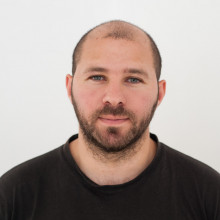
Office Phone: (+30) 2810 391217
Email: k.rementzi(AT)materials.uoc.gr

Office Phone: (+30) 2810 391981
Email: kalafatakisn(AT)iesl.forth.gr

Office Phone: (+30) 2810 391217
Email: dfounta(AT)iesl.forth.gr

Full CV: Download
Education
- 2017, BSc, Department of Materials Science and Technology, University of Crete (UoC), Greece
- 2020, MSc, Department of Materials Science and Technology, University of Crete (UoC), Greece
Interests
- Rheology and Μicrorheology at Ηigh Pressures
Stabilization of Supramolecular Polymer Phase at High Pressures
Nikolaos A. Burger , Antonios Mavromanolakis, Gerhard Meier, Patrick Brocorens, Roberto Lazzaroni, Laurent Bouteiller, Benoit Loppinet, Dimitris Vlassopoulos
ACS Macro Lett. , Volume:10, Page:321-326, Year:2021, DOI:https://doi.org/10.1021/acsmacrolett.0c00834
Intermixed Time-Dependent Self-Focusing and Defocusing Nonlinearities in Polymer Solutions
A. Bogris, N. A. Burger, K. G. Makris, B. Loppinet, G. Fytas
ACS Photonics, Volume:9, Issue:2, Page:722, Year:2022, DOI:https://doi.org/10.1021/acsphotonics.1c01917
Complete Dynamic Phase Diagram of a Supramolecular Polymer
N. A. Burger, G. Pembouong, L. Bouteiller, D. Vlassopoulos, B. Loppinet
Macromolecules, Volume:55, Issue:7, Page:2609, Year:2022, DOI:https://doi.org/10.1021/acs.macromol.1c02508

Office Phone: (+30) 2810 391217
Email: cpyromali(AT)iesl.forth.gr

Office Phone: (+30) 2810 391981
Email: daniele.parisi(AT)iesl.forth.gr

Office Phone: (+30) 2810 391252
Email: leogury(AT)iesl.forth.gr

Office Phone: (+30) 2810 395047
Email: lchambon(AT)iesl.forth.gr

Office Phone: (+30) 2810 391981
Email: abogris(AT)iesl.forth.gr

Office Phone: (+30) 2810 391260
Email: cocarillo(AT)iesl.forth.gr


